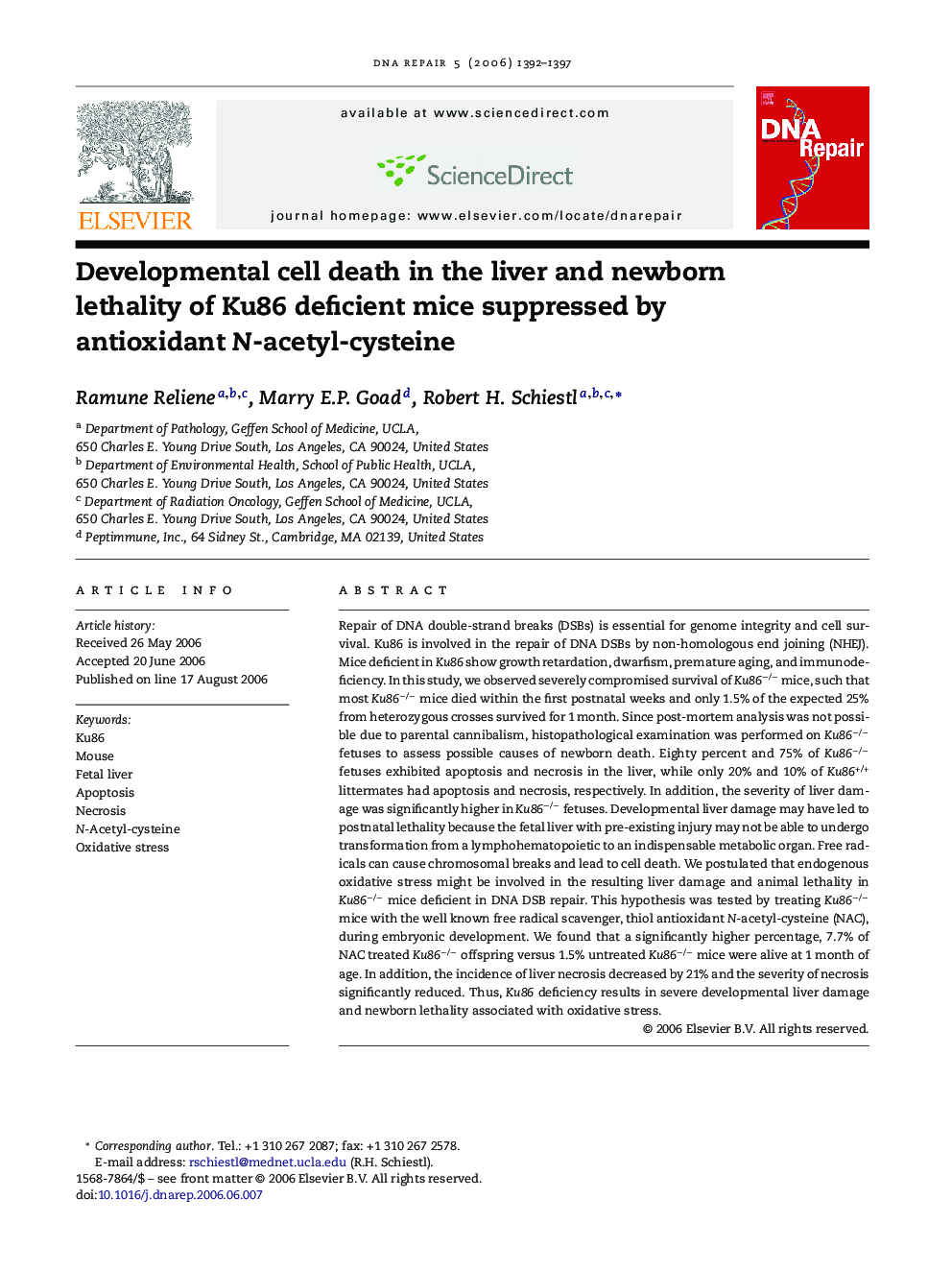| کد مقاله | کد نشریه | سال انتشار | مقاله انگلیسی | نسخه تمام متن |
|---|---|---|---|---|
| 1981023 | 1061894 | 2006 | 6 صفحه PDF | دانلود رایگان |
عنوان انگلیسی مقاله ISI
Developmental cell death in the liver and newborn lethality of Ku86 deficient mice suppressed by antioxidant N-acetyl-cysteine
دانلود مقاله + سفارش ترجمه
دانلود مقاله ISI انگلیسی
رایگان برای ایرانیان
کلمات کلیدی
موضوعات مرتبط
علوم زیستی و بیوفناوری
بیوشیمی، ژنتیک و زیست شناسی مولکولی
زیست شیمی
پیش نمایش صفحه اول مقاله

چکیده انگلیسی
Repair of DNA double-strand breaks (DSBs) is essential for genome integrity and cell survival. Ku86 is involved in the repair of DNA DSBs by non-homologous end joining (NHEJ). Mice deficient in Ku86 show growth retardation, dwarfism, premature aging, and immunodeficiency. In this study, we observed severely compromised survival of Ku86â/â mice, such that most Ku86â/â mice died within the first postnatal weeks and only 1.5% of the expected 25% from heterozygous crosses survived for 1 month. Since post-mortem analysis was not possible due to parental cannibalism, histopathological examination was performed on Ku86â/â fetuses to assess possible causes of newborn death. Eighty percent and 75% of Ku86â/â fetuses exhibited apoptosis and necrosis in the liver, while only 20% and 10% of Ku86+/+ littermates had apoptosis and necrosis, respectively. In addition, the severity of liver damage was significantly higher in Ku86â/â fetuses. Developmental liver damage may have led to postnatal lethality because the fetal liver with pre-existing injury may not be able to undergo transformation from a lymphohematopoietic to an indispensable metabolic organ. Free radicals can cause chromosomal breaks and lead to cell death. We postulated that endogenous oxidative stress might be involved in the resulting liver damage and animal lethality in Ku86â/â mice deficient in DNA DSB repair. This hypothesis was tested by treating Ku86â/â mice with the well known free radical scavenger, thiol antioxidant N-acetyl-cysteine (NAC), during embryonic development. We found that a significantly higher percentage, 7.7% of NAC treated Ku86â/â offspring versus 1.5% untreated Ku86â/â mice were alive at 1 month of age. In addition, the incidence of liver necrosis decreased by 21% and the severity of necrosis significantly reduced. Thus, Ku86 deficiency results in severe developmental liver damage and newborn lethality associated with oxidative stress.
ناشر
Database: Elsevier - ScienceDirect (ساینس دایرکت)
Journal: DNA Repair - Volume 5, Issue 11, 8 November 2006, Pages 1392-1397
Journal: DNA Repair - Volume 5, Issue 11, 8 November 2006, Pages 1392-1397
نویسندگان
Ramune Reliene, Marry E.P. Goad, Robert H. Schiestl,